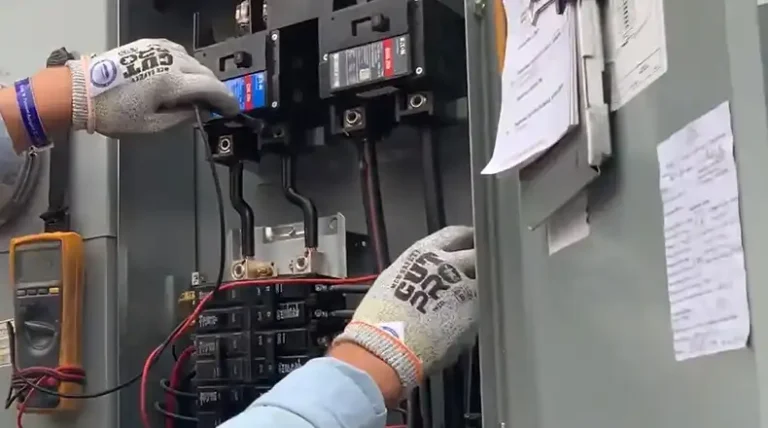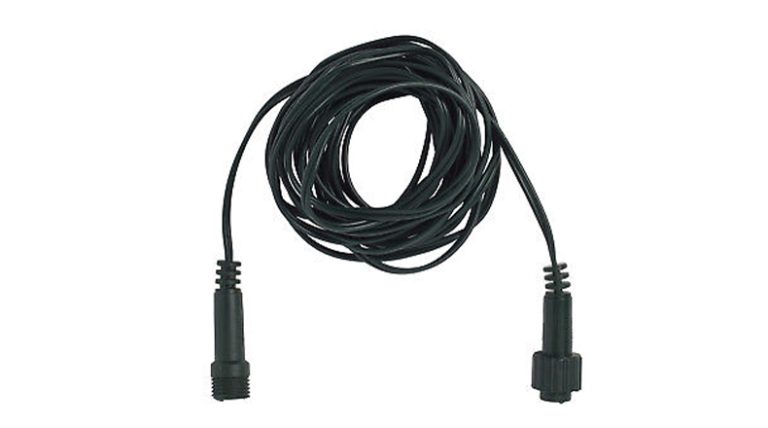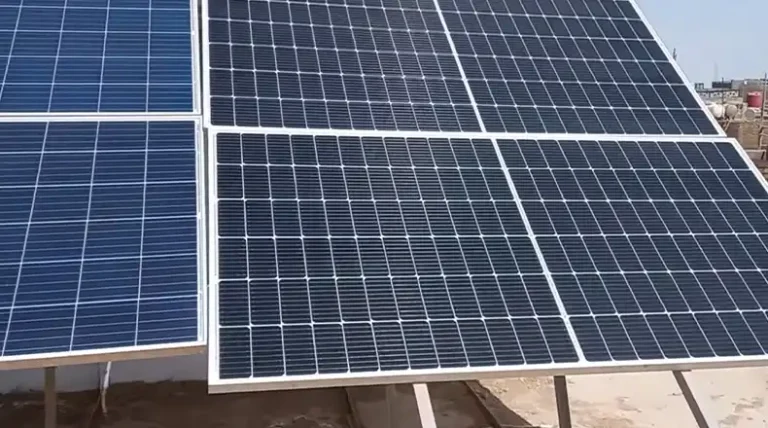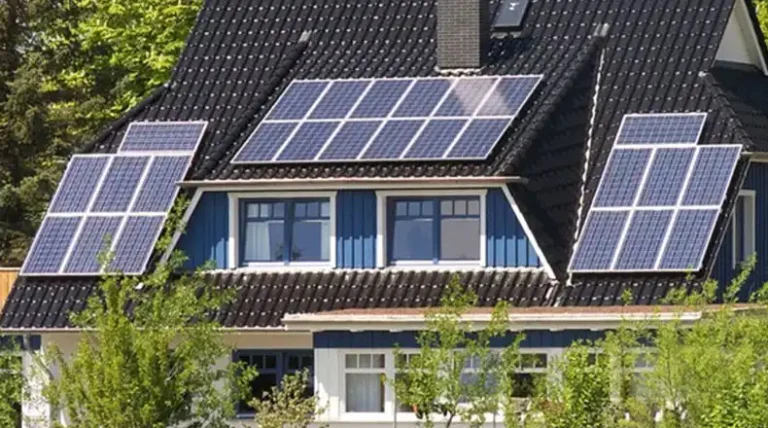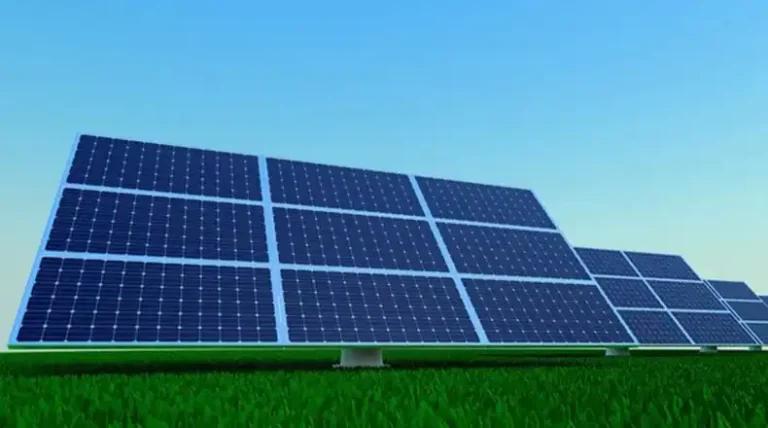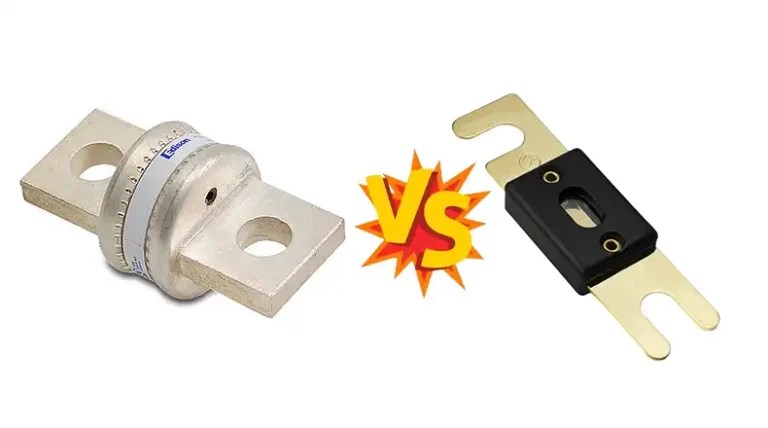How Much Solar to Run a Mini Split AC?
Deciding how much solar power you need to run a mini split heating and cooling system in your home can seem complicated. But with some basic information about the key factors that determine energy use, you can calculate the solar requirements with a simple formula.
In this article, we’ll walk through the step-by-step process to determine precisely how many solar panels you’ll need to keep your energy bills low and your mini split running efficiently.
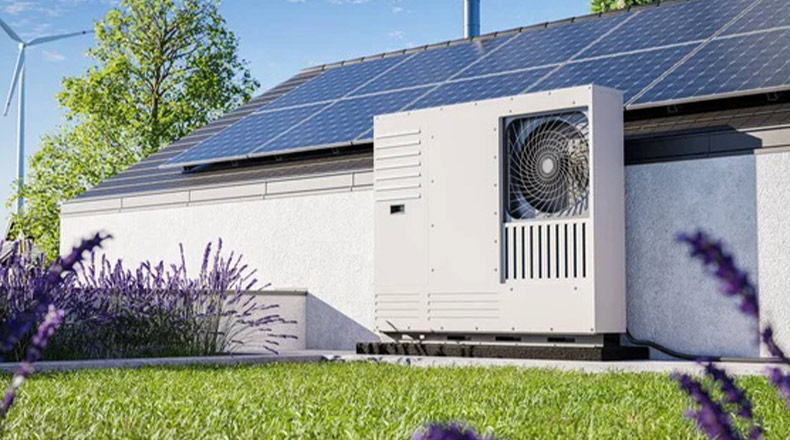
Factors that Affect Solar Power Requirements for Mini-Split AC
Several variables impact how much electricity your mini split uses, which in turn affects the solar power system size needed to operate it. The main factors include:
Size of The Mini-Split AC Unit
Mini splits come in a wide range of cooling and heating capacities, measured in thousands of British thermal units (BTUs) per hour. A larger BTU rating means greater energy use. For example, a 24,000 BTU unit requires twice as much power as a 12,000 BTU system. Make sure to get the BTU rating when determining solar requirements.
Efficiency of The Mini-Split Unit (SEER and HSPF)
The higher the Seasonal Energy Efficiency Ratio (SEER) and Heating Seasonal Performance Factor (HSPF), the less electricity the mini split uses. While less efficient units may have lower upfront costs, the long-term energy savings of highly efficient systems usually pay for themselves over time.
Usage Hour
How many hours per day and months per year you’ll use your mini split impacts total energy needs. Cooling needs tend to align with summer solar production, but heating use in winter makes storage more important in colder climates. Think about your unique usage pattern when sizing your system.
Heating or Cooling
If you’re using your mini-split for heating, your consumption will be higher than if you’re using it for cooling. This is because it takes more energy to heat a room than to cool it.
Outside Temperature
The outside temperature will also affect your consumption. If it’s very hot outside, your mini-split will have to work harder to cool your home, and your consumption will be higher. Similarly, if it’s very cold outside, your mini-split will have to work harder to heat your home, and your consumption will be higher.
Number of Rooms or Zones Need to be Treated
Multi-zone mini-split systems with multiple indoor air handler units use more energy than a single unit. Make sure to account for all areas you want to heat and cool when determining the total solar power requirements.
Calculation for Determining the Solar Power Required for Mini Split AC
Once you know the factors above, determining the solar array system size involves just a few key calculations, explained below.
Let’s use the example of a typical single zone mini split with the following specifications:
- Cooling capacity: 12,000 BTU (1 ton)
- SEER rating: 20
- Heating capacity: 12,000 BTU
- HSPF rating: 14
For Heating
Average Heating Watt Draw per hour = Capacity in BTU / HSPF Rating
= 12,000 BTU / 14 HSPF
= 857 Watts
Let’s assume 3 hours of heating per day.
Power Consumption for heating = 857 Watts x 3 hours
= 2,571 Watt-hours (2.571 kWh) per day
Account for 20% losses in the system: 2.571 kWh / 0.8 efficiency = 3.21 kWh per day actual solar generation required
For Cooling
Average Cooling Watt Draw per hour = Capacity in BTU / SEER Rating
= 12,000 BTU / 20 SEER
= 600 Watts
Likewise, 3 hours per day of cooling use:
Power Consumption for cooling = 600 Watts x 3 hours
= 1,800 Watt-hours (1.8 kWh) per day
Account for 20% losses in the system: 1.8 kWh / 0.8 efficiency = 2.25 kWh per day actual solar generation required
Note – However, the calculation is for one zone such as your bedroom. If you have multiple zones that need to be covered then the wattage usage will be multiplied by the number of zones!
Solar Panels Required for the System
Number of Solar Panels = (Daily Energy Requirement) / (Solar Panel Output)
Where:
Daily Energy Requirement = 3.21 kWh for warming(during winter) and 2.25 kWh(during summer) for cooling.
For calculating the number of solar panels, you will always need to opt for the maximum wattage requirement. Hence, for 3.21 kWh,
Solar Panel Output = 300W x 5 hrs.
= 1500 Wh or 1.5 kWh per panel
Number of Solar Panels = 3.21 kWh / 1.5 kWh per panel = 2.14 3 Solar panels required
If you are willing to do both heating and cooling, then the number of panels will be = 5.46 /1.5 =4 solar panels.
The specific calculation gives you an accurate basis for properly sizing your solar system to match your mini split’s energy consumption. With this approach, you can determine the precise solar power capacity needed for any efficiency mini split unit.
Impact of Outdoor Temperature on Mini Split Heating and Cooling Loads
Previously, we based our heating and cooling capacity and power consumption calculations on standard baseline conditions. However, as outdoor temperatures fluctuate substantially, the actual cooling and heating loads also change. Colder winter temperatures lead to higher heating requirements, while hotter summer conditions increase cooling demands.
To account for these factors, below are updated examples showing the effects of different outdoor temperatures on capacity and electricity needs. Sizing the solar array using peak load conditions ensures it can fully power the mini split even during periods of highest demand.
Cooling Capacity and Power at 85°F Outdoor Temperature
When sizing a mini split, we need to calculate the cooling load, which depends on the outdoor temperature.
At higher outdoor temps, the cooling capacity needed increases. As a rule of thumb, each degree F over 75°F equals 3% greater capacity needed.
So at 85°F, the increased capacity vs. 75°F is:
(85 – 75) x 3% = 30%
Our base capacity is a 12,000 BTU (1 ton) mini split.
With a 30% increased load at 85°F, the effective capacity needed is:
12,000 BTU x 1.3 = 15,600 BTU
The mini split specifications are:
SEER rating: 20
Average Cooling Watt Draw per hour = Capacity in BTU / SEER Rating
= 15,600 BTU / 20 SEER
= 780 Watts
If we assume 3 hours cooling per day:
Power Consumption = 780 Watts x 3 hours
= 2,340 Watt-hours (2.34 kWh)
Account for 20% losses in the system: 2.34 kWh / 0.8 efficiency = 2.925 kWh per day actual solar generation required
So at 85°F instead of 75°F, the higher cooling load would lead to 2.925 kWh daily energy consumption, versus 2.25 kWh at the lower temperature.
Heating Capacity and Power at 20°F Outdoor Temperature
Similar to cooling, the heating capacity needed rises significantly during colder outdoor conditions.
As an estimate, every 10°F decrease from the 65°F baseline results in a 25% higher heating capacity requirement.
Our base heating load was 12,000 BTU at 65°F.
At 20°F, there is a (65 – 20) = 45°F temperature difference. This is equivalent to 4.5 “steps” of 10°F.
So the increased heating capacity = 25% x 4.5 = 112%
The effective heating capacity needed at 20°F is:
12,000 BTU x 2.12 = 25,440 BTU
Our mini split specifications are:
HSPF rating = 14
Average Heating Watt Draw per hour = Capacity in BTU / HSPF Rating
= 25,440 BTU / 14 HSPF
= 1,817 Watts
Assuming 3 hours of heating runtime per day:
Power Consumption = 1,817 Watts x 3 hours
= 5,451 Watt-hours (5.45 kWh) per day
Account for 20% losses in the system: 5.45 kWh / 0.8 efficiency = 6.81 kWh per day actual solar generation required
So you can see how lower winter temperatures significantly increase the daily electricity consumption for heating. The solar system needs to be sized to meet these peak demands.
Hence, solar panels of 300W required = 6.81kWh / (300W*5 hours) = 4.54 5
People Also Ask – PAA
What if I only use AC during the summer and heat during winter?
You would only need to account for the daily cooling electricity usage in summer and daily heating usage in winter when sizing your solar system. This would result in a smaller solar array requirement than year-round usage.
How much does solar for a mini split cost?
The system costs depend on size, but roughly estimate $2-4 per watt of solar capacity installed. Based on the 163 panel 12kW system in our example, the approximate cost would be $24,500 to $49,000 installed.
What factors reduce the number of solar panels needed?
Using a more efficient mini split unit (higher SEER and HSPF ratings), reducing operating hours, powering fewer zones/rooms, and being in a climate with more annual peak sunlight hours can all potentially decrease the number of solar panels required.
What efficiency solar panels should I use?
Monocrystalline silicon solar panels from reputable brands with at least 20% efficiency are recommended for reliably powering mini split systems. Higher efficiency means more power production from each panel.
Should I consider battery storage?
Energy storage allows capturing extra solar power during the day to use at night. This reduces reliance on the grid for overnight heating/cooling. For 100% off-grid mini splits, batteries are essential.
Final Thoughts
Determining the right solar array size for your mini split is crucial for powering it sustainably. With some quick calculations to factor in your mini split’s efficiency ratings, usage patterns, number of zones, and climate, you can accurately size the system. Solar paired with an energy-efficient inverter mini split heat pump can eliminate energy bills while providing reliable heating and cooling for your home.
I hope this step-by-step guide gives you the confidence to calculate how much solar you need for any mini-split application. Please leave a comment below if you have any other questions. Thanks for reading!

